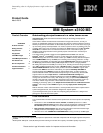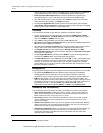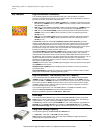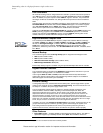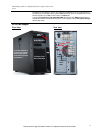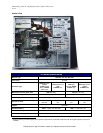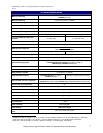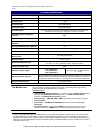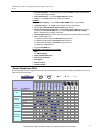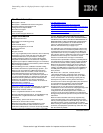
Outstanding value in a high-performance single-socket tower
server
Please see the Legal Information section for important notices and information.
2
memory throughput and lower latency than DDR2 memory, while consuming up to 30% less
energy. DDR3 memory also consumes up to 30% less energy than DDR2 memory.
• Three high-speed PCIe adapter slots offer investment protection by supporting high-
performance adapters, such as 10Gb Ethernet, Fibre Channel and InfiniBand cards.
• Up to four (model-specific) 3.5-inch enterprise-class SATA II hard disk drives offer terrific
price/performance (incorporating up to 3Gbps throughput).
• The integrated Gigabit Ethernet controller provides high-speed network communications.
• A high degree of device integration—including the SATA and video controllers, and Gigabit
Ethernet—lowers costs and frees up valuable adapter slots.
Flexibility
The x3100 M3 has the ability to grow with your application requirements, thanks to:
• A choice of quad-core or dual-core processors, including 2.4 to 2.66GHz Xeon, 3.06GHz
Core i3, 2.8GHz Pentium, or 2.26GHz Celeron processor with 73 or 95W maximum power
draw, and 1333MHz or 1066MHz memory access.
• Up to 16GB of high-speed DDR3 system memory in four DIMM sockets.
• Up to three available high-performance PCIe slots (model-specific) and one available 32-bit
PCI slots (for legacy adapters) in all models.
• Up to four internal 3.5-inch fixed SATA II HDDs offer low-cost/high-capacity enterprise-class
storage. The 3.5-inch drives provide a maximum of 1TB apiece of internal storage.
• An available 5.25-inch drive bay supports either a half-high tape drive or an RDX
Removable Disk Cartridge drive, for cost-effective data backup. A dedicated 3.5-inch drive
is reserved for an optical drive.
• The IBM 3Gbps SAS HBA v2 controller provides RAID-0/1 support for internal SATA hard
disk drives and RAID-0/1/1E for external SAS/SATA and tape drives.
• The eight USB 2.0 ports are up to 40X faster
3
than older USB 1.1 ports. This provides speedy
access to external HDDs (non-arrayed), optical drives, tape drives, and other USB devices.
Two ports are on the front of the unit and four are on the back. In addition, there are two
internal USB 2.0 port for use with a tape drive, RDX Removable Disk Cartridge drive, or USB
flash drive containing a hypervisor.
Manageability
Powerful systems management features simplify local and remote management of the x3100 M3:
• An optional Virtual Media Key provides additional systems management capabilities,
including graphical console redirection over LAN; and remote redirection of PCI video,
keyboard and mouse (cKVM). And it does all this without consuming a valuable adapter slot.
• IPMI 2.0 supports highly secure remote system power control using data encryption. This
allows an administrator to restart a server without having to visit it in person, saving travel time
and getting the server back up and running quickly and securely. It also adds new features to
those provided by IPMI 1.5, including VLAN support, Serial over LAN, enhanced
authentication and encryption algorithms (RMCP+ and AES) and a firmware firewall.
Availability and Serviceability
The x3100 M3 provides many features to simplify serviceability and increase system uptime:
• Server-class components, including the processor, memory, chipset, power supply, and
others, are built for the rigors of an “always-on” environment. This helps reduce the risk of
failure and life cycle costs, versus using a PC as a server.
• ECC memory provides error correction not available in PC-class “servers” that use parity
memory. Avoiding system crashes (and data loss) due to soft memory errors can mean
greater system uptime
• Toolless cover removal provides easy access to upgrades and serviceable parts. Similarly,
adapters and memory can be installed and replaced without tools. This can mean less time
(and therefore less money) spent servicing the x3100 M3.
• Temperature-controlled fan adjusts to compensate for changing thermal characteristics. At
the lower speeds it draws less power and suffers less wear. Also important in an office
environment, temperature-controlled fans produce less ambient noise than if they were
constantly running at full speed.
3
Data transfer rates may be less than the maximum possible.



